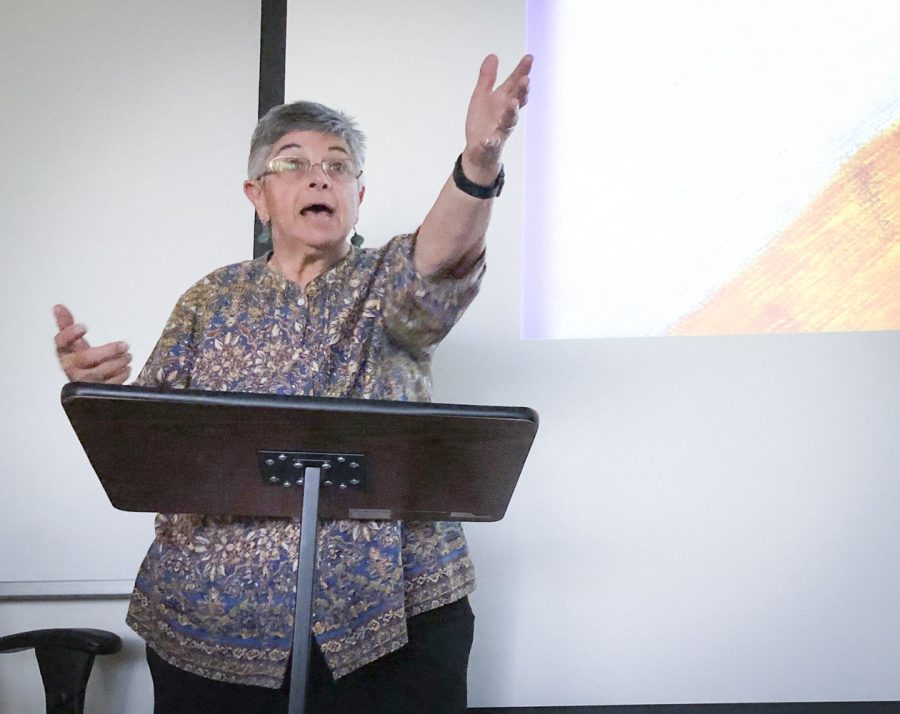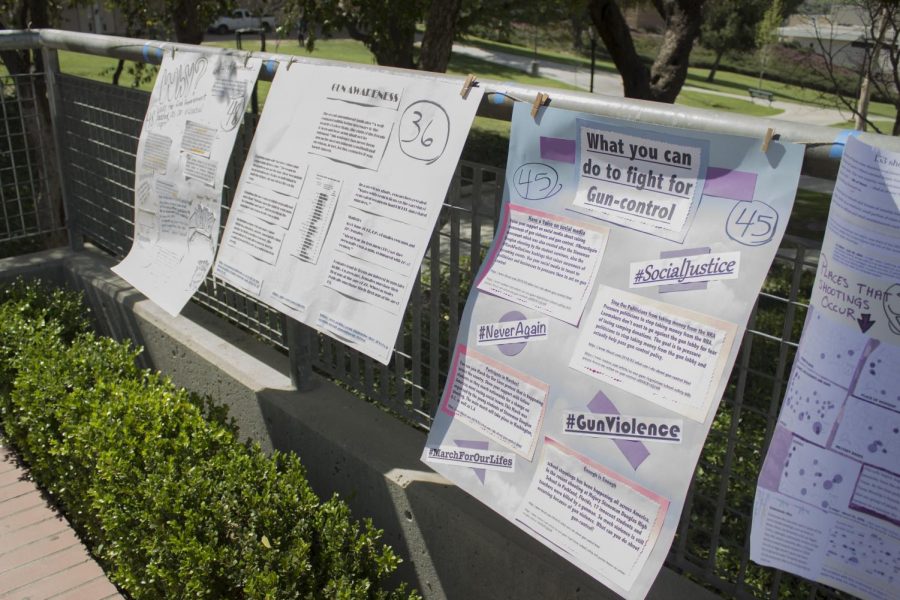A Mixtec community organizer and Oxnard College alumni shared his insight in a lecture on the history, culture, traditions and social issues of the indigenous Mixtec people residing in Ventura County.
Arcenio Lopez, Associate Director of the Mixteco/Indigena Community Organizing Project (MICOP), began his lecture telling the audience of his personal struggles and accomplishments since arriving in the U.S.
“When I first arrived here in 2003, I started out as a farm worker and I didn’t realize how difficult it would be to live here,” said Lopez. “To be a farm worker is really hard work, so, I decided to learn English and attend Oxnard Adult School.”
The presentation was part of the OC Literature, Arts and Lecture Series titled, “The Indigenous Mixtec Community in Ventura County,” that was held on Feb. 23 in the LS-8 auditorium.
Lopez was born in the Mexican state of Oaxaca, which is bordered by the states of Veracruz and Guerrero. Once he was of age, Lopez migrated to the U.S. in search of a better life.
As the lecture continued to evolve, the audience was able to familiarize itself with the topics presented by Lopez. There was vital focus on the history, language, population, traditions, education, immigration, social issues, discrimination, MICOP and their life in California.
“We are the People of the Rain,” said Lopez. “Even though we come from the an ancient civilization that is 3,000 years old, we are later influenced by the Aztecs.”
Community member, Maria Ferrer, found Lopez’s use of photographs to illustrate his talking points, key to understanding the lives of the Mixtecs.
“I grew up here in Oxnard and I have always been around them,” said Ferrer. “But I guess I never really paid attention to what they are all about or where they come from. I think that the pictures he brought really make a difference.”
Nonetheless, the purposes and struggles of the Mixtec community continue to go unnoticed according to Lopez.
Despite the large population of approximately 20,000 Mixtecos in Ventura County, the language barrier adds to the lack of cultural awareness within the members of the community, who in turn devalue, oppress and discriminate against them.
“Students should be aware of what surrounds them because often times, there are many opportunities for them to contribute to the community,” said Lopez. “Therefore, cultural awareness is very important because everyone is part of a community that is diverse.”
The Mixtecos are an indigenous community evolving with a unique dialect that they use to communicate and traditions that they use to keep their culture alive.
Dances like the ‘Guelaguetza’ and food like ‘tlayudas’, help this indigenous group conserve their ethnicity even when they are far from home.
The Mixteco community makes their living working in the agricultural, landkeeping, construction and restaurant fields.
According to Lopez, they contribute greatly to the economic status of Ventura County as well as the cultural vitality.
Shelley Savren, English professor and coordinator for this event, was contacted about the MICOP organization felt it important for students to we aware of.
“Considering that we have such a large Mixteco population in Ventura County, it’s important to know our neighbors as well as our fellow students of the same origin,” said Savren.
Although they are faced with discrimination and other barriers, the Mixtecs remain strong and united in hopes of continuing forward as taxpayers, consumers and neighbors.
Maria Hernandez, a 21-year-old mathematics major, believes it is important for students to be involved in their community.
“This event is very important,” said Hernandez. “I came here today because I want to learn about the people from Oaxaca. It’s important for me to know about the things that are going on in my community.”
MICOP offers the Mixtec community various services and are always looking for volunteers to help in their cause.
Margaret Sawyer, Director of MICOP, explains that volunteers are the base of their organization.
“Our organization was built by volunteers, coming together to donate their time to empowering and supporting this community,” said Sawyer. “Today we rely on a wide network of Mixtec and non-Mixtec volunteers to support our programming and to expand our connections to the wider community.”
“Working with this organization has helped me attend school, get trained in different leadership skills and network with other organizations,” said Lopez. “But what makes me the most proud is working with the people of my community and contributing to the Mixtec community.”
For more information on MICOP, please visit www.mixteco.org.






